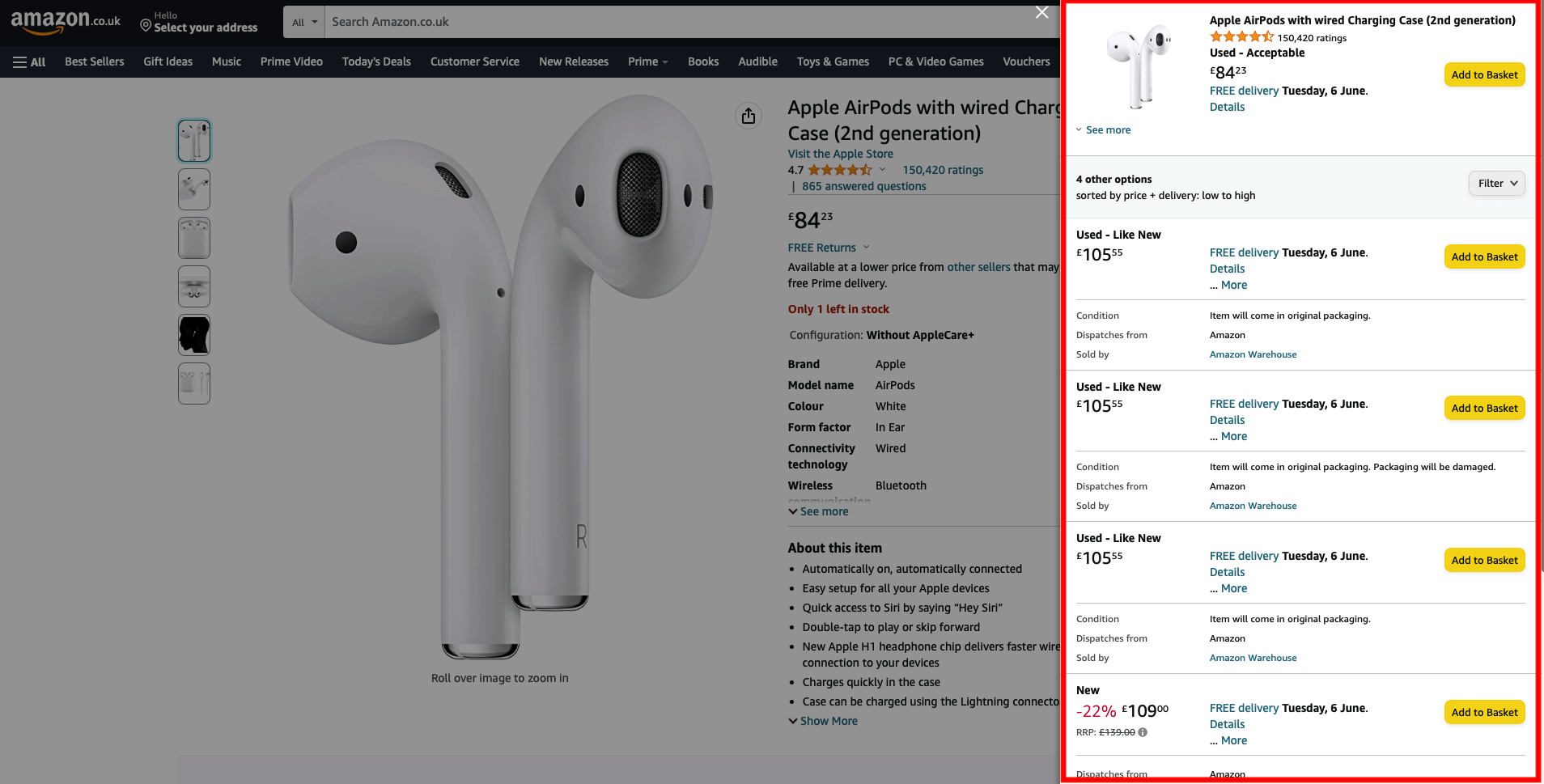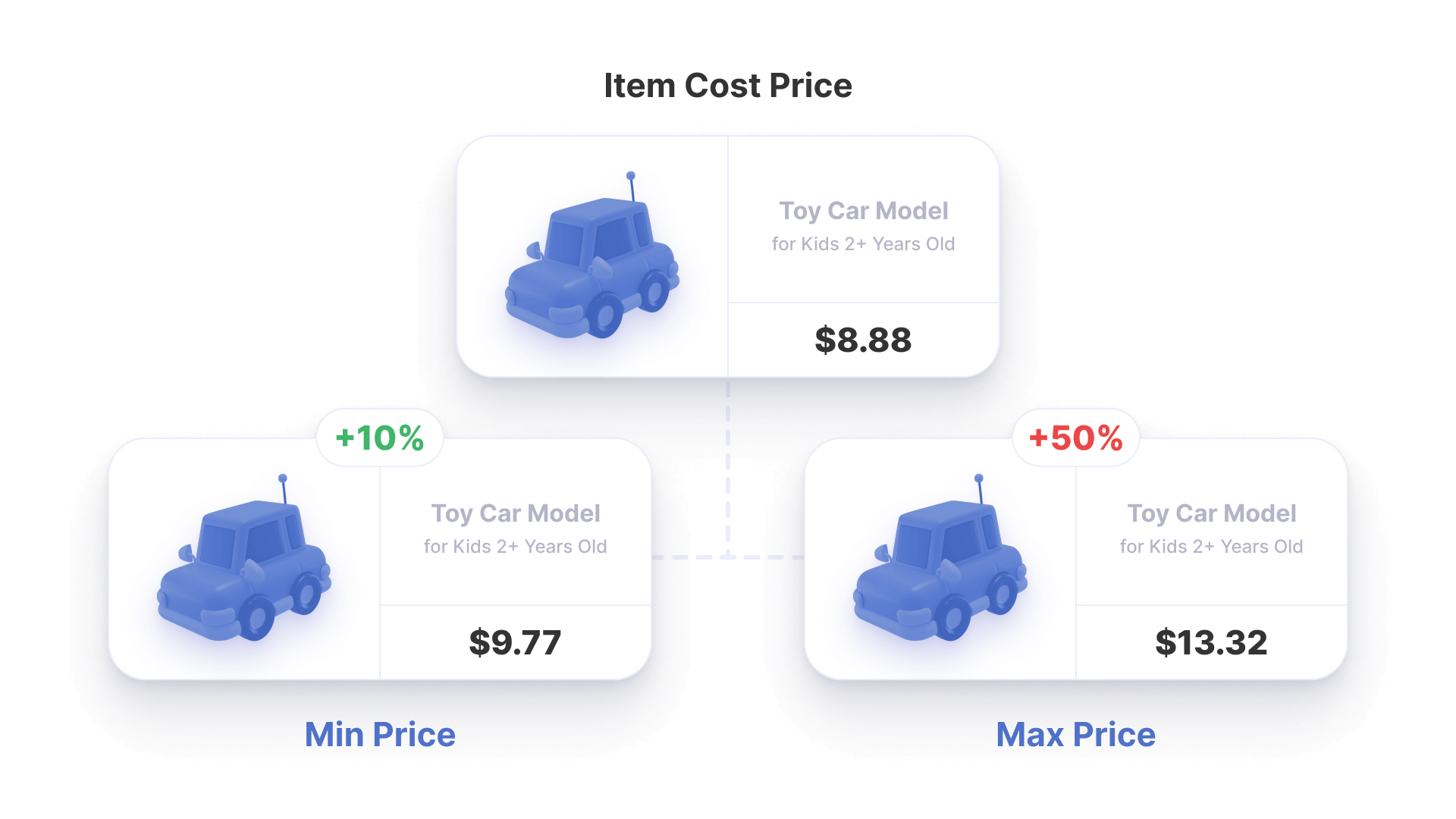Many people run successful businesses on Amazon selling new products, but did you know you can sell used products too?
You need different tactics to grow your business if you’re selling used products, from sourcing the products to competing against other sellers to making more sales and profits.
One area that you’ll still want to focus on is repricing.
In this guide, we’ll look at some of the best strategies you can use to reprice used products on Amazon.
TL;DR
- Selling used products on Amazon requires slightly different tactics than new products.
- There are several repricing strategies you can focus on in order to sell more products and maximize profits.
- From setting minimum and maximum prices to repricing based on season and time of day, several Amazon repricing strategies may be effective.
- There are also some important tips to keep in mind to enjoy more success when selling used products on Amazon.
Let’s jump straight into the 9 best Amazon repricing strategies for used products.
1. Aim to Win the Used Buy Box

Don’t try and win the Buy Box, because you’re not eligible—but you can win the Used Buy Box.
Sometimes referred to as the Buy Used Box, this is where you compete against other used products in the same way as new products compete against each other.
One of the golden rules of repricing is to avoid competing against products that are not in the same condition as your own.
Clearly, new products and used or refurbished products do not compete with each other.
The listings you want to compete against, therefore, are those that are selling items in the same condition.
Always know who your competitors are when you’re devising your repricing strategy, and this is especially important when you’re selling used products.
2. Use Automated Repricing Tools
You can carry out repricing in two ways. The first is to do the work yourself, where you decide upon a strategy and then keep a close eye on your competitors. When your competitors increase or decrease their prices, you put your prices up or down based on their actions by changing the price manually.
But this isn’t a realistic practice for most Amazon sellers and it takes too long. You can’t keep track of all your competitors’ price movements when you’re monitoring their listings on your own.
Instead, use an automated repricing tool.
Repricer.com, for example, does all the work for you. It keeps track of your competitors and knows as soon as one of them changes their price or runs out of stock. It then reacts based on the rules you have decided upon.
This all happens automatically, so you can focus on other areas of running your business and let the repricing tool manage your price changes in the background.
3. Undercut the Competition
One of the most important repricing strategies is to simply undercut your competitors on price so you can be the cheapest seller.
When it comes to winning the Buy Box, price is a crucial factor. If your competitor lowers the price of their used product in a bid to win the Used Buy Box, they may start making more sales. But you can set your repricing tool up to keep a close eye on the competition.
As soon as they drop their price, you can react very quickly, and the repricing will change your product’s price based on your rules.
Suddenly, your product could be the lowest price, and you start making more sales at the expense of your competitor.
4. Increase the Price Based on Demand
A lot of your repricing decisions will come down to supply and demand.
With a repricing tool doing the hard work for you, you can get it to keep an eye on demand. If demand increases, or supply falls, you can change your prices accordingly.
Let’s say your main competitor has misjudged their stock levels and they run out of stock. In this case, you suddenly have fewer competitors.
You could instruct your repricing tool to increase the price of your product in this case. Not only might you make more sales because your competitor is out of the game, but you could increase profits at the same time.
5. Set Minimum & Maximum Prices

When it comes to your pricing strategy, it’s always important to determine a minimum and maximum price for each product.
This is crucial because the danger is that you could reduce your price too much. If you’re using manual repricing, this is often one of the major risks. Why? Because it’s easier to act on emotions.
If you reduce your price and your competitor drops their price further, you may be tempted to keep reducing the price even more. This is fine up to a point, but you may get caught up in the price war and end up pricing your product too low.
This could mean you’re selling your product at a loss, which doesn’t help you.
When you set a minimum and maximum price, your repricing tool will always respect these. This gives you time to calculate a minimum price that makes sense for you. Once you have calculated the costs involved in selling your product, including the shipping costs, you know how low you can go.
Your repricer always sticks to the rules you set, so you won’t have to worry about missing out on profits by going too low.
The maximum price is also important. Perhaps demand is high but the supply goes down because a competitor runs out of stock. In this case, you can set your product price to increase and generate more profits.
6. Reduce Prices to Shift Inventory
You don’t always have to change the price of your used products to react to what your competitors are doing. Instead, you might want to change prices to meet a specific goal on your part.
For example, you might have a product that isn’t doing as well as you had hoped it would. Perhaps you’ve managed to get hold of a large quantity of used goods that you’re now having trouble shifting.
In this case, you might want to lower the price. This could help you get rid of these products sooner, so you can focus your efforts on your more successful products.
Keep track of your products using good inventory management, and be aware of when they’re not shifting as quickly as you would like. Determine how low you can set the price to shift them, then lower the price accordingly.
7. Reprice Based on Season
You might also want to change the price of your used products based on the season. This all comes down to demand.
If you sell used festive products on Amazon, once January comes around, you may find that you still have stock remaining. You could always wait until next year, but this may not be an option, especially if you don’t want to store your inventory for another year.
In this case, a repricing strategy where you reduce the price to clear stock could be a good idea. You could then shift your used items sooner and reinvest your profits in different used products that you can sell during the year.
Related: 7 Ways to Get Ready for the Holiday Season
8. Reprice Based on Time of Day
Another option to consider is repricing based on sales numbers on particular days or at certain times.

Once you have been selling a used product for a while on Amazon, check your sales data. You may be able to spot certain patterns. For example, sales may be slow on some days of the week or at a particular time of the day.
Your initial reaction may be to reduce prices to sell more, but you might want to do the opposite. By doing this, if you make fewer sales at a certain time of day, you can focus on maximizing profits for the sales you make.
9. Use Price Skimming or Anchoring
Price skimming is a technique you can try, especially if you sell unique items with a lot of demand. Simply start with a higher price, then reduce the price gradually over time.
Early buyers are more willing to pay premium prices, so you can take advantage of this. Then you can reduce the price to make more sales later on from those who are less willing to pay higher prices.
Price anchoring is a similar technique where you set a higher price for your used product, suggesting a higher value. Then you provide a large discount. Buyers may be more likely to order it because of the perception they’re getting a better deal.
Keep Optimizing Your Repricing Strategy
These are all ideas you can use when determining the best repricing strategies for your used products. But the most important thing of all is to keep on refining and optimizing your strategies.
Don’t set up a rule and forget about it. Instead, keep a close eye on your sales stats and get serious about gathering and analyzing data. That way, you can find out what’s working and what isn’t.
An automatic repricing tool can take a lot of the work out of repricing, But it’s up to you to optimize your strategies to generate more profits for your business, and this is an ongoing process.
Other Tips for Selling Used Products
As well as repricing, there are other things to keep in mind when you sell used products on Amazon. Here are some of the most important ones to follow to enjoy more success with used or refurbished products:
Be Clear About the Condition
Accurate condition grading is essential when you sell used products. If you have any doubts, list it as a lower condition to be on the safe side.
It’s always better for the customer to be pleasantly surprised instead of upset with the condition, so try to exceed their expectations.
Source High-Margin Products
The cheaper you can buy your used products for, and the higher you can sell them, the better.
When launching a product, seek out products that have a lot of demand without too much competition and for which you can earn more profits with each sale.
Garage sales and thrift stores are good places to find used products, so keep your eye open for good deals.
Provide Excellent Customer Service
Ensure you provide top customer service. Just because you’re selling used items, don’t think that means you can offer poor customer service.
Buyers will still demand the best, and Amazon has high standards you must meet, including responding to questions quickly.
Work on Getting More Reviews
Positive reviews will really help when you sell used products. People want to know they can trust the seller, and this is even more important with used products. They’re less sure about what they will receive, so make sure you get more positive feedback to increase trust.
Put Effort into Your Listings
When you sell a product that isn’t in the catalogue, create a new listing that goes above and beyond. Use high-quality images and persuasive copy to give the buyers more confidence.
Use Repricing to Sell More Used Products
Selling used products on Amazon presents a different set of challenges to selling new products, but it can be very profitable.
Don’t assume that you don’t need to use repricing strategies because you’re selling used products. It’s just as important and, in some ways, it’s even more important as when you sell new products.
Consider the minimum and maximum price you’re willing to sell each product for, then choose an automatic repricing tool like Repricer. You can then determine your strategies and set up your rules.
By having a good set of repricing strategies in place, you may find that you can not only sell more products but also increase your profit margins.
Many people enjoy great success selling used products on Amazon, and you can do the same. Follow the tips in this guide and use repricing to boost sales and profits.



